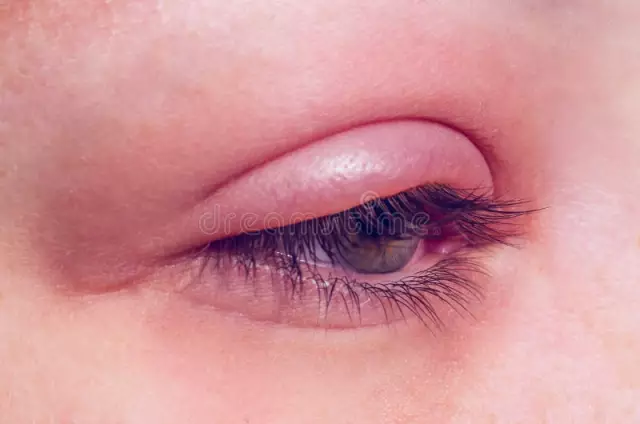- Author Rachel Wainwright [email protected].
- Public 2023-12-15 07:39.
- Last modified 2025-11-02 20:14.
8 misconceptions about cataracts
According to the World Health Organization, cataracts are diagnosed in almost 7% of the world's population. The morbidity statistics are considered incomplete, since at the initial stage, the disease, as a rule, does not cause any particular inconvenience to a person, and many sick people do not immediately turn to doctors. However, cataracts are not only one of the most common ophthalmic ailments, but also the cause of half of all vision loss.
Despite the fact that the disease is very well studied, there are many misconceptions associated with it, the most popular of which are presented below.
Only the elderly suffer from cataracts
This is not true. About half of cataracts are diagnosed in people between the ages of 39 and 65. Women get sick twice as often as men. At a more advanced age, the disease develops in 75% of people. Factors of cataract occurrence are diabetes mellitus and other metabolic disorders, vitamin deficiency, poor environmental conditions, some chronic diseases, taking a number of medications, and eye injuries. It is believed that the risk of developing the disease increases if the organs of vision are exposed to prolonged intense exposure to ultraviolet light.
Cataracts can also be congenital: it occurs in babies whose mothers have taken alcohol or steroids during pregnancy, have suffered exposure to penetrating radiation or infectious diseases.

Source: depositphotos.com
Cataract is a film on the eye
The delusion arose due to the fact that the pupil of the diseased eye becomes noticeably lighter, as if covered with a foggy film, and also because of the symptoms of the disease: the patient sees indistinctly, the outlines of objects are distorted, the perception of color is impaired (the colors look dull). For the onset of the disease, the perception of the visible picture in a slightly blurred form is characteristic, as if a person is looking through wet glass, film or jets of water. Sometimes there is a split image. There is no pain, but visual acuity is significantly reduced.
In fact, a cataract is a clouding of the lens and a loss of elasticity.

Source: depositphotos.com
The appearance of cataracts can be prevented
If the disease is caused by factors such as metabolic disorders or eye trauma, it is possible to slow its progression through adequate treatment of the underlying disease. Age-related cataracts (especially with a hereditary predisposition) cannot be prevented. It does not follow from this that the ailment cannot be treated: a timely operation and a properly selected postoperative therapy will undoubtedly help.
Contrary to popular belief, work associated with the tension of the visual apparatus does not affect the likelihood of developing cataracts.

Source: depositphotos.com
Cataracts can be treated with drops
At the moment, the main method of combating cataracts is an operation to remove the lens and replace it with a synthetic analogue. Scientists continue to develop drugs, there are very encouraging intermediate results, but so far, therapeutic agents that can reverse the process of lens opacity are not used in wide clinical practice. The drops that pharmaceutical companies are currently offering, at best, slightly slow the progression of the disease.

Source: depositphotos.com
Only a mature cataract can be operated on
This is not so much a misconception as an outdated idea of how to fix the problem. It has survived from the times when, due to the technical features of the operation, it was really difficult for doctors to perform it in the early stages of cataract development.
The introduction of modern highly scientific technologies has made it possible to remove restrictions of this kind. Today ophthalmologists successfully operate on cataracts of any degree of maturity. The term of the appointment of the procedure depends solely on how the decrease in visual acuity affects the patient's quality of life.

Source: depositphotos.com
Laser cataract removal
The most progressive and less traumatic method of removing the affected lens is its gentle crushing with ultrasound. The resulting debris is removed through a microscopic incision in the cornea. The operation does not require suturing and hospitalization of the patient.
Sometimes a complication arises after the procedure: a thin film forms behind the newly installed synthetic lens (the so-called secondary cataract). It is she who is removed with a laser on an outpatient basis.

Source: depositphotos.com
Glasses can be removed after cataract removal
This happens, but not always. The need for additional vision correction after surgery depends on the type of synthetic lens installed and whether the patient has other ophthalmic problems.
In some cases, the clouded lens is removed without replacement. Such patients are forced to wear very strong lenses all their lives. In addition, the operation to remove cataracts solves the problem of transparency of the main optical element of the organ of vision, but does not in any way affect the condition of the eye muscles and the entire apparatus responsible for the accuracy of accommodation. It tends to get worse with age. Therefore, most people who have had lens replacement surgery still wear glasses.

Source: depositphotos.com
All cataract surgeries are performed the same way
Only the principle of intervention is common. The rest of the parameters of the operation (technology, synthetic lens model, etc.) depend on the general condition of the patient, the presence and nature of concomitant diseases and, importantly, his financial capabilities. For example, a procedure such as ultrasonic phacoemulsification is performed using very expensive equipment, and therefore cannot be “budgetary”.
Synthetic lenses (otherwise - intraocular lenses, IOLs) can have different properties and costs. They are produced both at domestic enterprises and abroad. When preparing for the operation, the doctor must offer the patient the best IOL option and explain how the new lens will work. After discharge from the medical institution, the patient is issued a passport of the installed lens.

Source: depositphotos.com
Today, cataract surgery is performed in most clinics in our country. The technology of intervention has been perfectly worked out, doctors have accumulated vast experience. The procedure is considered one of the safest, you should not be afraid of it. On the contrary, having felt a drop in vision, it is necessary to urgently seek medical help. This will make it possible to avoid serious complications (up to complete blindness) and restore the lost quality of life.
YouTube video related to the article:

Maria Kulkes Medical journalist About the author
Education: First Moscow State Medical University named after I. M. Sechenov, specialty "General Medicine".
Found a mistake in the text? Select it and press Ctrl + Enter.






